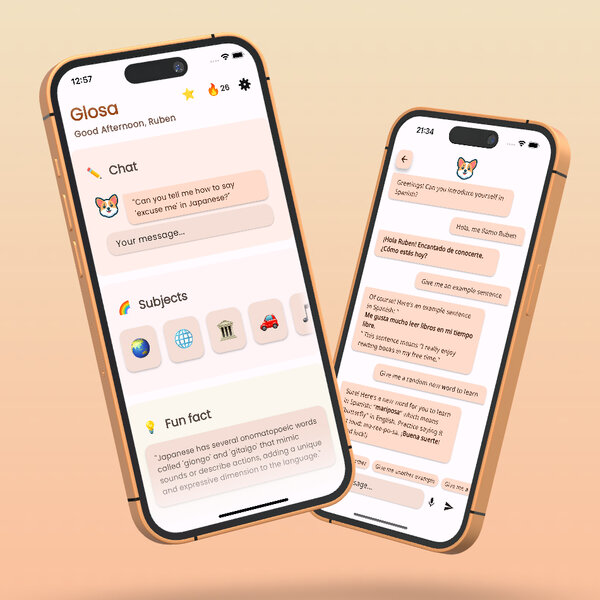· study hacks · 12 min read
The Best Way to Learn a Language: A Comprehensive Guide
Unlock the secrets to mastering a new language with our comprehensive guide. Discover effective methods, tools, and strategies to make your language learning journey enjoyable and successful. Learn the best way to learn a language with tips for all learning styles.

Learning a new language is an incredibly rewarding experience. It opens up opportunities to connect with new people, understand different cultures, and even advance in your career. However, the journey to fluency can be challenging without the right approach. In this guide, we will explore the best way to learn a language, covering various techniques and tools to help you on your journey. Whether you are an auditory, visual, or kinesthetic learner, you’ll find methods that suit your style and make language learning more effective.
Understanding Language Learning Styles
Everyone learns differently, and understanding your learning style can significantly enhance your language acquisition process. Let’s explore the best way to learn a language based on different learning styles.
Different Learning Styles
Auditory Learners: These learners grasp new information better through listening. They benefit from listening to podcasts, songs, and conversations in the target language. Audio resources, such as language learning CDs and apps with audio features, can be particularly effective.
Visual Learners: Visual learners need to see information to understand it. They thrive on flashcards, videos, and reading materials. Using visual aids like charts, diagrams, and color-coded notes can help reinforce their learning.
Kinesthetic Learners: These learners learn best through hands-on activities. They enjoy engaging in interactive exercises and real-life practice scenarios. Activities like role-playing, using physical objects for vocabulary practice, and writing out sentences can be very beneficial.
Identifying Your Learning Style
To identify your learning style, reflect on past learning experiences. Which methods helped you understand new concepts quickly? You can also take online quizzes designed to determine your learning style. Once you know your preferred style, tailor your language learning activities accordingly. Combining multiple methods can also be effective, as it allows you to reinforce learning through different channels.
Immersion Techniques
Immersing yourself in the language and culture is one of the most effective ways to learn a new language.
Benefits of Language Immersion
Immersion helps you think in the language, improves your pronunciation, and accelerates your understanding of cultural nuances. It makes the learning process natural and enjoyable. You begin to associate the language with everyday activities, which helps cement your learning.
Strategies for Immersing Yourself
Travel: If possible, spend time in a country where the language is spoken. This first-hand experience is invaluable. Engaging with locals, participating in community events, and navigating everyday tasks in the language can significantly boost your skills.
Language Exchange: Partner with native speakers to practice conversing in your target language while helping them with your native language. This mutual exchange can be very motivating and beneficial for both parties.
Media Consumption: Watch movies, listen to music, and read books in the language you’re learning. This exposes you to everyday usage and slang. Subscribing to newsletters, following social media influencers, and watching YouTube channels in the target language can also enhance immersion.
Daily Activities: Incorporate the language into your daily routine. For example, think in the language when planning your day, make your shopping list in the language, and set your devices to the language.
Join Local Groups: If there are cultural clubs or language groups in your area, join them. Engaging with a community of learners and native speakers can provide regular practice opportunities and cultural insights.

Practice Makes Perfect: Speaking and Listening
Speaking and listening are crucial components of language acquisition.
Importance of Speaking and Listening Practice
Active use of the language improves fluency and confidence. Listening helps you understand pronunciation, rhythm, and intonation. Engaging in regular conversations allows you to practice thinking and responding quickly in the language, which is essential for fluency.
Finding Speaking Partners
Language Exchange Apps: Apps like Tandem and HelloTalk connect you with native speakers. These platforms allow you to practice speaking and get real-time feedback.
Local Meetups: Join local language learning groups or cultural clubs. Participating in group activities and conversations can boost your confidence and provide diverse speaking experiences.
Online Communities: Participate in forums and social media groups focused on language learning. Websites like Reddit have language learning communities where you can find speaking partners and practice opportunities.
Utilizing Audio Resources
Podcasts, audiobooks, and language learning apps provide excellent listening practice. Platforms like Spotify and Audible offer a vast selection of language learning content. Listening to these resources during commutes, workouts, or while doing chores can help integrate learning into your daily routine.
Podcasts: Listen to podcasts in your target language. Choose topics that interest you to make the learning process enjoyable. Podcasts often feature natural speech and varied vocabulary.
Audiobooks: Listen to audiobooks while reading along with the text. This helps you associate spoken and written words. Choose books you are already familiar with in your native language to make comprehension easier.
Language Learning Apps: Apps like Glosa, Rosetta Stone, and Pimsleur offer structured audio lessons that guide you through speaking and listening exercises.

Reading and Writing Proficiency
Building strong reading and writing skills is essential for language mastery.
Improving Reading Comprehension
Start Simple: Begin with materials that match your current level, such as children’s books, graded readers, and simple articles. Gradually move to more complex texts as your skills improve. This progressive approach ensures that you build a solid foundation before tackling more challenging materials.
Daily Reading: Incorporate reading into your daily routine. Read news articles, blog posts, or short stories in your target language. Even spending 10-15 minutes a day can make a significant difference over time.
Context Clues: Use context clues to understand new words. Try to infer the meaning from the surrounding text before looking up the definition. This practice can help you become more adept at reading without constant dictionary use.
Bilingual Books: Use bilingual books that have the target language on one page and your native language on the opposite page for easy reference. This can help you understand complex sentences and new vocabulary.
Enhancing Writing Skills
Journaling: Write daily entries in a journal. This practice helps you organize your thoughts and improve your writing fluency. Describe your day, express your thoughts on various topics, or write about your language learning progress.
Writing Exercises: Use apps and online resources that provide writing prompts and exercises. Websites like Italki and Hinative allow you to write essays and have them corrected by native speakers. This feedback is invaluable for improving your writing accuracy.
Language Exchange: Exchange written pieces with a language partner. Writing letters or emails in your target language and receiving feedback can be very helpful. This not only improves your writing skills but also enhances your understanding of cultural communication styles.
Creative Writing: Try creative writing exercises, such as writing short stories or poems. This not only improves your language skills but also makes the learning process fun. Experiment with different genres and styles to expand your vocabulary and expressive abilities.
Incorporating Technology and Language Learning Apps
Technology provides a plethora of tools to aid in language learning.
Overview of Our Recommended Language Learning Apps
Glosa: Offers AI-integrated language learning with personalized pathways, vocabulary building, and interactive exercises. It adapts to your learning style and progress, providing a customized learning experience.
Duolingo: Known for its gamified approach, making learning fun and engaging. It offers bite-sized lessons and uses repetition to reinforce learning.
Rosetta Stone: Focuses on immersive learning through real-life scenarios. It emphasizes intuitive learning and visual associations.
Babbel: Provides practical language skills with a focus on conversation. It offers structured courses tailored to different proficiency levels.
Choosing the Right App
Goals: Identify your learning goals. Are you looking to improve speaking skills, expand your vocabulary, or achieve overall fluency? Different apps cater to different aspects of language learning.
Learning Style: Choose an app that aligns with your preferred learning style. Visual learners might prefer apps with lots of images and videos, while auditory learners might benefit from those with extensive audio content.
Features: Look for apps with features that suit your needs, such as speech recognition, interactive exercises, and progress tracking. Some apps also offer community features where you can interact with other learners.
Maximizing Effectiveness
Consistency: Dedicate a specific time each day to use the app. Consistency is key to retaining information. Setting a daily goal, even if it’s just for a few minutes, can help build a habit.
Interactive Features: Engage with all the features of the app, including speaking, listening, reading, and writing exercises. Using the app’s full range of activities ensures a well-rounded learning experience.
Track Progress: Regularly check your progress and adjust your learning plan as needed. Use the app’s tracking features to stay motivated. Celebrating milestones and achievements can help maintain your enthusiasm.

Cultural Immersion and Contextual Learning
Understanding the culture behind a language enriches the learning experience.
Importance of Cultural Context
Learning about the culture helps you understand idiomatic expressions, social norms, and non-verbal communication. It makes language use more authentic and respectful. Cultural knowledge can also prevent misunderstandings and help you navigate social situations more effectively.
Ways to Incorporate Cultural Immersion
Cultural Media: Consume media that reflects cultural practices, such as films, TV shows, and literature. This helps you understand the context in which certain phrases are used. Following news channels and popular media in the target language can provide insights into current cultural trends and issues.
Festivals and Events: Participate in cultural events and festivals. These provide a fun way to experience the language and culture firsthand. Engaging in cultural activities can also introduce you to new friends and language learning partners.
Cuisine: Explore the culinary traditions of the culture. Cooking recipes in your target language can be an enjoyable way to learn new vocabulary and phrases. Understanding the cultural significance of certain foods can also enrich your language learning experience.
Cultural Etiquette: Learn about cultural etiquette and social norms. This knowledge can be crucial when interacting with native speakers and understanding the subtleties of communication.

Setting Goals and Tracking Progress
Setting clear, achievable goals is crucial for staying motivated and making consistent progress.
Significance of Setting Measurable Goals
Measurable goals provide a clear roadmap for your learning journey. They help you stay focused and give you a sense of accomplishment as you reach each milestone. Goals can be related to vocabulary acquisition, fluency levels, or specific skills like speaking or writing.
Tools and Techniques for Tracking Progress
Language Learning Apps: Use apps with built-in progress tracking to monitor your improvement over time. Apps often provide metrics and reports that highlight your strengths and areas for improvement.
Journals: Maintain a journal to record new words, phrases, and reflections on your learning experiences. Regular entries can help you see your progress and stay motivated.
Regular Assessments: Take quizzes and tests regularly to evaluate your progress. This helps identify areas that need more attention. Consider taking standardized language tests to measure your proficiency levels.
Language Challenges: Participate in language learning challenges or set personal challenges, such as learning a certain number of words per week or engaging in a conversation with a native speaker.

Overcoming Challenges and Staying Motivated
Language learning can be challenging, but with the right strategies, you can stay motivated and overcome obstacles.
Common Challenges
Plateaus: It’s common to hit a plateau where progress seems slow. This can be frustrating but is a normal part of the learning process. Changing your study routine or trying new learning methods can help overcome plateaus.
Fear of Making Mistakes: Many learners hesitate to speak or write due to fear of making mistakes. Remember, making mistakes is an essential part of learning. Embrace errors as learning opportunities.
Time Management: Balancing language learning with other responsibilities can be challenging. Finding time for consistent practice is crucial. Integrating language practice into your daily routine can make it easier to manage.
Strategies for Overcoming Challenges
Celebrate Small Wins: Recognize and celebrate your achievements, no matter how small. This keeps you motivated and positive. Reward yourself for reaching milestones.
Language Exchange: Regular practice with a partner keeps you engaged and accountable. Sharing your challenges and successes with a partner can provide mutual support. Partners can also offer new perspectives and learning tips.
Variety: Mix up your learning activities to keep things interesting. Try different methods, such as watching videos, reading articles, and practicing speaking. Variety prevents boredom and keeps your brain engaged.
Staying Motivated
Set Realistic Goals: Break down larger goals into manageable steps. Achieving these smaller goals gives you a sense of progress and keeps you motivated. Regularly review and adjust your goals as needed.
Reward Yourself: Treat yourself for reaching milestones. This can be anything from a small treat to a bigger reward like a trip to a country where the language is spoken. Rewards can provide extra motivation to stay committed.
Join a Community: Engage with fellow learners for support and motivation. Online forums, social media groups, and local language clubs can provide a sense of community and encouragement. Sharing your experiences and learning from others can be very inspiring.
Track Progress: Use tracking tools to monitor your improvement. Seeing your progress visually can be very motivating. Apps, journals, and progress charts can help you stay on track.
Stay Curious: Keep your curiosity alive. Explore different aspects of the language and culture. The more interested you are, the more motivated you’ll be to continue learning.
Conclusion
Learning a new language is a journey filled with challenges and rewards. By understanding your learning style, immersing yourself in the language and culture, and leveraging technology, you can make significant progress. Remember to set measurable goals, track your progress, and stay motivated. Start your language learning journey today with confidence and enthusiasm.
Whether you choose an app like Glosa, join a local language group, or immerse yourself in cultural experiences, the key is to stay consistent and enjoy the process. Happy learning!
By following these tips and utilizing the resources available, you will be well on your way to mastering a new language. Embrace the journey, and don’t be afraid to make mistakes—they are a natural part of learning. Good luck!




